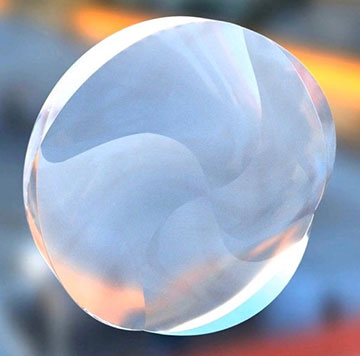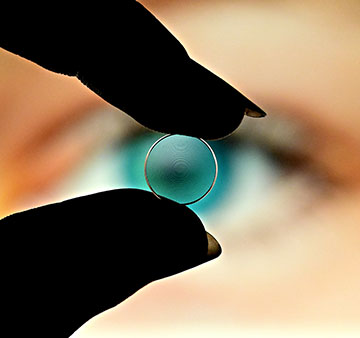Researchers in France have developed a new type of lens that uses a spiral-shaped surface to maintain a clear focus at different distances in varying light conditions. [Image: Laurent Galinier]
Many people with presbyopia wear bifocal glasses, with a design that hasn’t changed much since the 18th century. Now, researchers in France have invented a spiral-shaped lens that they say maintains clear focus at a wide range of distances.
The new lens, called a spiral diopter, creates an optical vortex that produces many separate points of focus in the field of view (Optica, doi:10.1364/OPTICA.507066). The team believes that the design could lend itself not just to eyewear, but also to intraocular implants for cataracts and compact imaging systems.
The spiral design
In recent years, scientists have explored extending the depth of field of lenses for computational imaging, microscopy and other applications. One particular use for such multifocal lenses is to replace the human intraocular lens after the removal of a cloudy cataract. Ideally, such a lens would provide the wearer with a wide range of clear focus, but some users experience vision issues in bright light after the procedure.
The lead author of the study, Laurent Galinier of SPIRAL SAS got the idea for the spiral diopter from studying patients with large deformations of the cornea. Galinier and his colleagues reasoned that a spiral shape on the lens would create an optical vortex that would produce multifocal imaging regardless of the aperture of a system (eye or camera).
“Creating an optical vortex usually requires multiple optical components,” Galinier said in a press statement. “Our lens, however, incorporates the elements necessary to make an optical vortex directly into its surface.”
The new spiral-surface lens could be used on contact lenses (shown), in intraocular implants for cataracts and to create new types of miniaturized imaging systems. [Image: Courtesy of B. Simon]
Making an optical vortex
Regular astigmatism-correcting lenses have different curvatures along their sagittal and tangential axes. Galinier and his team, including Bertrand Simon of the Photonics, Numerical and Nanosciences Laboratory, created prototype acrylic contact lenses and, using a digital lathe, inscribed them with a Fermat spiral pattern. The researchers tested the lenses with a 532-nm laser diode passing through a 40-μm pinhole to measure the lenses’ focusing performance compared with a trifocal lens consisting of three concentric, nonspiraling focal zones.
Dark spots in the centers of the point-spread functions of both the prototype spiral lenses and the computer simulations of the lenses reveal the presence of optical vortices, according to the scientists. The findings also show that the spiral diopters outperform conventional trifocal lenses at both small and wide apertures. Galinier has applied for a US patent for the spiral-shaped lens design.



